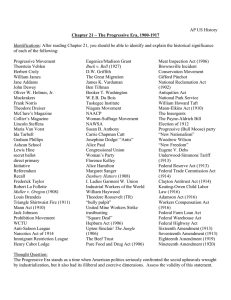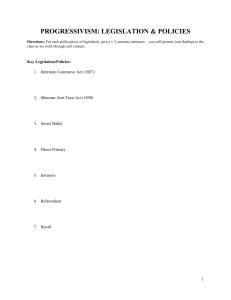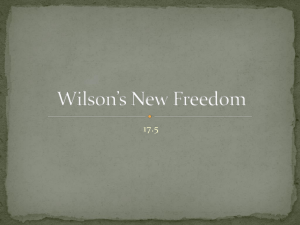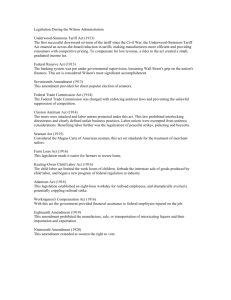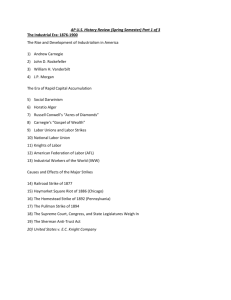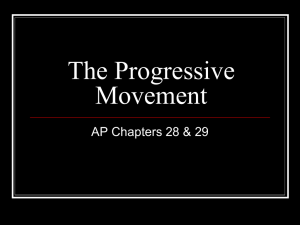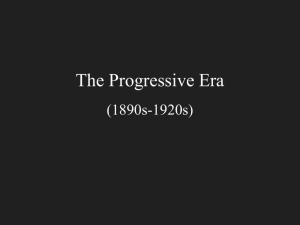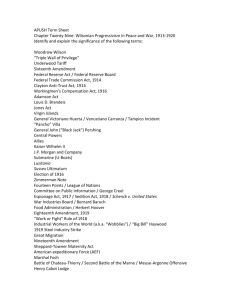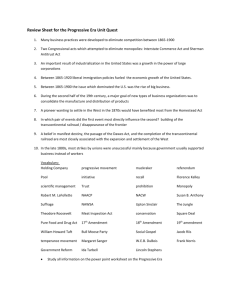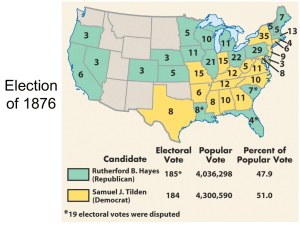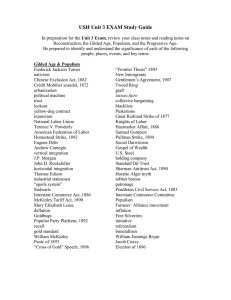THE PROGRESSIVE ERA Unit Guide
advertisement
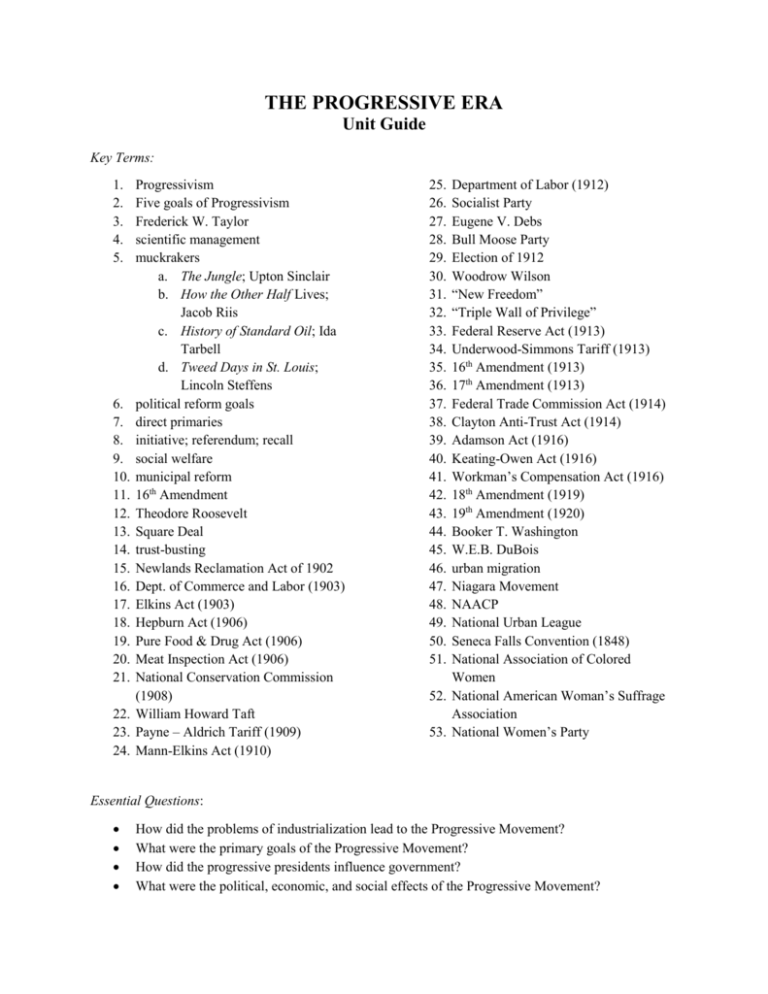
THE PROGRESSIVE ERA Unit Guide Key Terms: 1. 2. 3. 4. 5. 6. 7. 8. 9. 10. 11. 12. 13. 14. 15. 16. 17. 18. 19. 20. 21. 22. 23. 24. Progressivism Five goals of Progressivism Frederick W. Taylor scientific management muckrakers a. The Jungle; Upton Sinclair b. How the Other Half Lives; Jacob Riis c. History of Standard Oil; Ida Tarbell d. Tweed Days in St. Louis; Lincoln Steffens political reform goals direct primaries initiative; referendum; recall social welfare municipal reform 16th Amendment Theodore Roosevelt Square Deal trust-busting Newlands Reclamation Act of 1902 Dept. of Commerce and Labor (1903) Elkins Act (1903) Hepburn Act (1906) Pure Food & Drug Act (1906) Meat Inspection Act (1906) National Conservation Commission (1908) William Howard Taft Payne – Aldrich Tariff (1909) Mann-Elkins Act (1910) 25. 26. 27. 28. 29. 30. 31. 32. 33. 34. 35. 36. 37. 38. 39. 40. 41. 42. 43. 44. 45. 46. 47. 48. 49. 50. 51. Department of Labor (1912) Socialist Party Eugene V. Debs Bull Moose Party Election of 1912 Woodrow Wilson “New Freedom” “Triple Wall of Privilege” Federal Reserve Act (1913) Underwood-Simmons Tariff (1913) 16th Amendment (1913) 17th Amendment (1913) Federal Trade Commission Act (1914) Clayton Anti-Trust Act (1914) Adamson Act (1916) Keating-Owen Act (1916) Workman’s Compensation Act (1916) 18th Amendment (1919) 19th Amendment (1920) Booker T. Washington W.E.B. DuBois urban migration Niagara Movement NAACP National Urban League Seneca Falls Convention (1848) National Association of Colored Women 52. National American Woman’s Suffrage Association 53. National Women’s Party Essential Questions: How did the problems of industrialization lead to the Progressive Movement? What were the primary goals of the Progressive Movement? How did the progressive presidents influence government? What were the political, economic, and social effects of the Progressive Movement?
